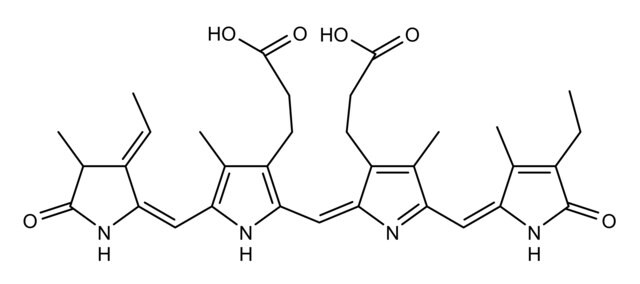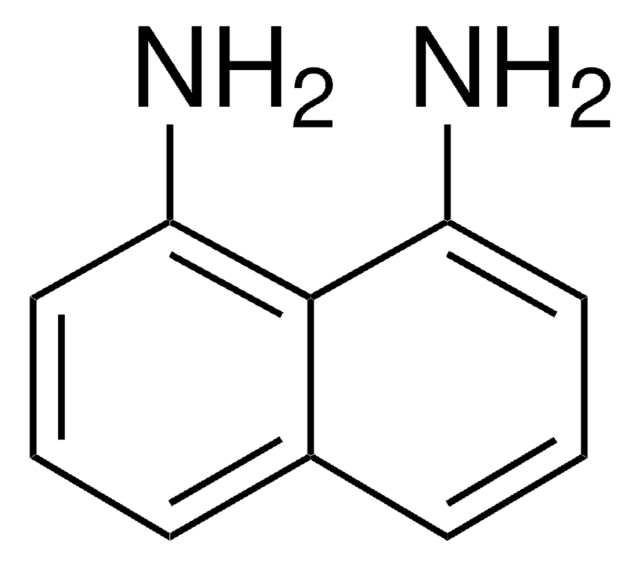Key Documents
R9532
Pyocyanin, Ready Made Solution from Pseudomonas aeruginosa
5 mg/mL in DMSO
Synonim(y):
5-Methyl-1(5H)-phenazinone, Pyocyanine, Sanasin, Sanazin
About This Item
Polecane produkty
Próba
≥98% (HPLC)
Poziom jakości
Postać
DMSO solution
stężenie
5 mg/mL in DMSO
Warunki transportu
dry ice
temp. przechowywania
−20°C
ciąg SMILES
CN1c2ccccc2N=C3C(=O)C=CC=C13
InChI
1S/C13H10N2O/c1-15-10-6-3-2-5-9(10)14-13-11(15)7-4-8-12(13)16/h2-8H,1H3
Klucz InChI
YNCMLFHHXWETLD-UHFFFAOYSA-N
Opis ogólny
Zastosowanie
- To disable the ability of forkhead box A2 (FOXA2) to regulate goblet cell hyperplasia and metaplasia (GCHM) and mucin expression.
- To activate nuclear factor (erythroid-derived 2)-like 2 (NRF2) through the reactive oxygen species (ROS)-inducible epidermal growth factor receptor (EGFR)-phosphoinositide 3-kinase (PI3K) cellular signal transduction pathway and its downstream effectors.
- To stimulate Pseudomonas aeruginosa PAO1 cell line adhesion and invasion in human lung carcinoma A549 cells via reactive oxygen species (ROS) production.
Działania biochem./fizjol.
Kod klasy składowania
10 - Combustible liquids
Klasa zagrożenia wodnego (WGK)
WGK 1
Temperatura zapłonu (°F)
Not applicable
Temperatura zapłonu (°C)
Not applicable
Certyfikaty analizy (CoA)
Poszukaj Certyfikaty analizy (CoA), wpisując numer partii/serii produktów. Numery serii i partii można znaleźć na etykiecie produktu po słowach „seria” lub „partia”.
Masz już ten produkt?
Dokumenty związane z niedawno zakupionymi produktami zostały zamieszczone w Bibliotece dokumentów.
Klienci oglądali również te produkty
Nasz zespół naukowców ma doświadczenie we wszystkich obszarach badań, w tym w naukach przyrodniczych, materiałoznawstwie, syntezie chemicznej, chromatografii, analityce i wielu innych dziedzinach.
Skontaktuj się z zespołem ds. pomocy technicznej











